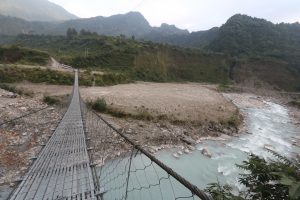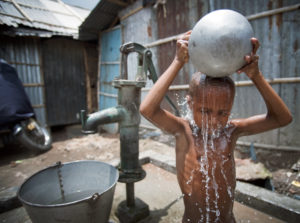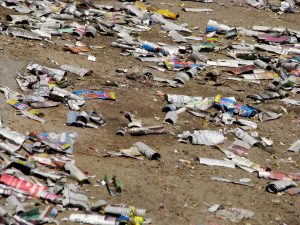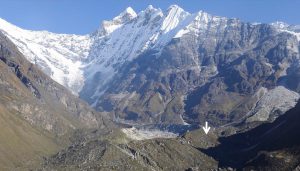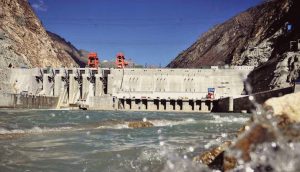A tsunami of mud with waves over two metres high devastated the village of Bento Rodrigues in southeastern Brazil after two dams containing waste material at the Samarco mining complex collapsed last Thursday. The destruction was so widespread that it is still not clear how many people have died or are still missing. Homes have been buried, cars flung onto rooftops and animals and trees dragged miles away. After backhoes managed to clear a pathway, firefighters rescue 530 people who had been stranded.
Rescue teams have been working around the clock to reach the site which is almost completely inaccessible because of the sheer quantities of mud. So far only one death has been confirmed but between 25 and 30 workers were on site when the disaster occurred. Some 600 families lived in the 200 homes within the immediate area. The municipal government estimates that two thousand people have been affected by the accident. Survivors were brought to a shelter set up in a gymnasium in the neighboring town, where they received food and clothing.
The accident occurred at an iron ore mine owned by Samarco, a joint venture between the Brazilian mining company Vale and the British-Australian BHP Billiton. Today, Samarco stated that there was no danger of contamination because the waste, known as tailings, basically consists of sand. Nevertheless, rescued victims have been told by the company to wash themselves with soap and water as a precaution. More than 60 square kilometers of plantations were wiped out and the deluge of mud has also affected other towns and rivers in the surrounding area.
Luiz Paniago Neves of the National Department of Mineral Production, the agency responsible for overseeing mining in Brazil, told G1 that even if the iron ore did leak, waste products from iron ore mining are not toxic. But Ricardo Mota Pinto Coelho of the Federal University of Minas Gerais (UFMG) disagrees. He told radio station CBN that all iron mining waste is contaminated with heavy metals, even if the levels are low.
The seismological observatory at Brasília University registered seismic disturbances in the region shortly before the disaster, but authorities believe it is too early to blame earthquakes for the collapsed dams. According to Ricardo Vescovi, president of Samarco, the force of the first dam breaking led to the capitulation of the second dam. But he also stated that the reasons for the failure of the first dam will only be known subsequent to a full investigation.
Nearly all the ore extracted from the mine in Bento Rodrigues is carried by pipelines to a port owned by the company in Espírito Santo, from which it is then exported. Between January and September, Samarco produced 10.7 million tons of pellets of iron ore of varying levels of concentration. The pellets are said to boost productivity in steelworks, they also supposedly reduce greenhouse gases generated during steel production – reasons the product is in high demand in China.
Chinese companies Henan Longyu Energy Resources Co. Ltd and Zhuhai YPM Pellet e Co. Ltd are major investors in Vale, one of the world’s largest mining companies. The company had produced 35.8 million tons of iron pellets by September this year, not including those produced by Samarco. China is the main export destination for the company’s iron ore and also invests in its maritime transport.
The day after the tragedy, Vale president Murilo Ferreira released a statement expressing his regrets about the accident, stating that “no effort would be spared” to support the company and the authorities during what he called a “sad time” for employees, their families and the mining area’s wider community.
